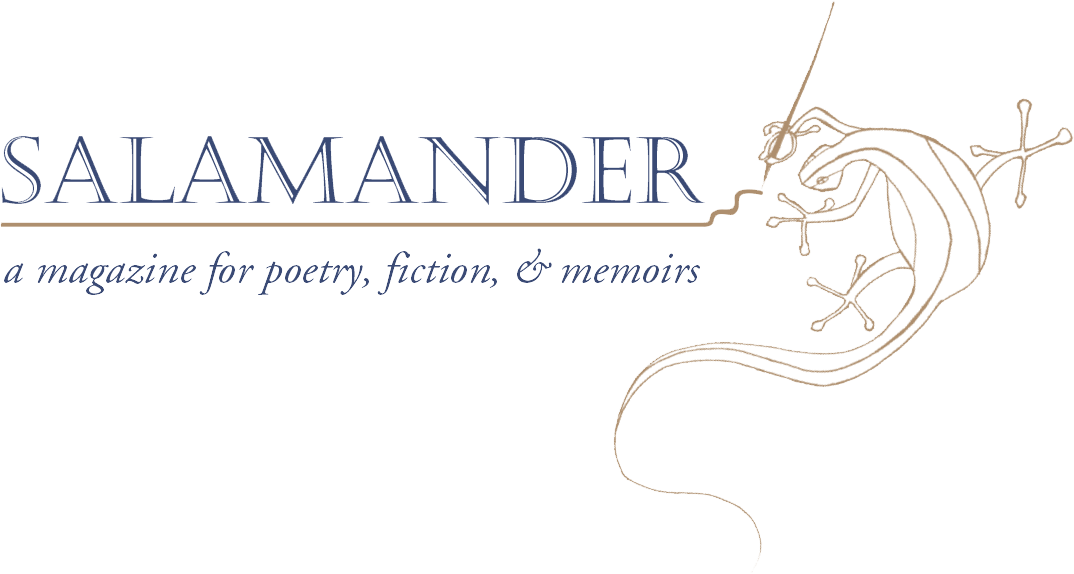Another poem, “Black Docent,” continues this theme of aureate sensuality in what is easily the most complex and rewarding instance of Austin sampling a work of art. Deceptively straightforward, the poem takes after Darren Waterston’s “Filthy Lucre” (2015), which itself recreates and reinterprets Whistler’s infamous construction, “Harmony in Blue and Gold: The Peacock Room” (1876). An astounding work of interior decorative art, Whistler’s original consists of a paneled dining room painted in lush greens and blues, illuminated with gold leaf and over-glazing in a spellbinding fusion of architecture and painting. More interesting for Austin is the dramatic backstory: “Whistler painted The Peacock Room for a patron / he grew to hate: fights over integrity and money / inspired his harmony of blue and green.” Waterston’s piece reimagines Whistler’s contentious creation as an aged, dilapidated version of itself, replete with with shattered shelves, gold paint bleeding onto the floor, and “sensuous peacocks in heat— / one snatches the entrails from another’s throat.” But all of the aforementioned theatrics are foreplay for Austin, whose speaker boldly admits, “I recognize these peacock-men”:
They never know what room they’re in
even when I’m there. They don’t feel guilty
when they’re done with me.
Whistler painted The Peacock Room
140 years ago. Slavery had not been excised
from the Americas. I’ve wanted
to be hurt into gold.
The speaker’s desire to be painfully twisted into something or someone of great value cannot be separated from the brutal reality of time. By interjecting the obvious fact of Africans’ enslavement, Austin historicizes Whistler in a way Waterston cannot. The offhand manner of the interjection reads as just another fact, yet another crucial dynamic that too often goes totally overlooked.
Compared to Frank O’Hara for his unfettered use of autobiography, Austin is, I’d argue, equally akin to Kerry James Marshall, a visual artist whose striking portraits stand out for their bold shades of black and arresting nods to injustice rooted in racism. Consider Marshall’s “Heirlooms & Accessories,” which begins with photographs from 1930 that depict the lynchings of two Black men, their backgrounds almost entirely washed out, so as to nearly match the stark white canvas they’re painted on. In contrast, Kerry foregrounds the faces of three different white women, who are themselves accessories to the killings. Framed in lockets, the women’s visages live on as enduring symbols of America’s homicidal, racist legacy, which passes like an heirloom from one generation to the next. So, too, does Austin voice the otherwise unspeakable in “Epithalamium,” a poem ostensibly penned to celebrate a wedding day. Amid the “picnic spots nearby, gazebos and grills / emerging from palmettos and bindweed,” a somber interjection interrupts midway:
In this lush expanse a man
was lynched
at the beginning of the century
I was born in.
But then, the poem moves on, its speaker suspended in time, ankle deep in river water, reflecting on the fact that, “All this will be gone someday,” even the “lynching tree when this river rejoins the others / and washes this away.” And here’s where Austin’s willingness to surface co-existing, contradictory realities reconnects with the Romantics and their successors, resists closure, and turns away the tidy pessimism that has ensconced this country and our mainstream understanding of what is to come. In perfectly open, uncertain terms, Austin’s speaker rejects the simple linearity of narrative unfolded, instead embracing both elegy and ode, possibility and inevitability, the effervescent duality of man:
no, not gone
but come together, history, nature, love, and loss
brought to scale in a glorious
algal bloom, a brightness of jade and amber,
all this water moving toward where it’s always belonged,
where I cannot be, where I am.
